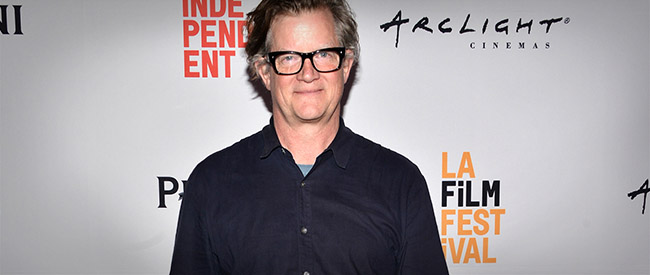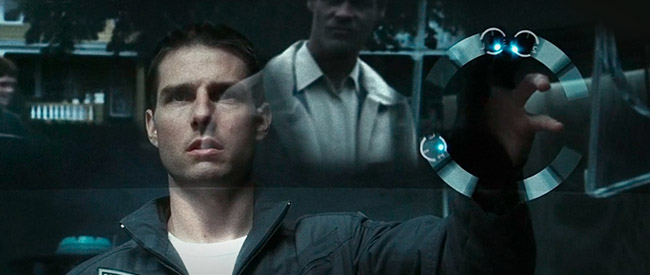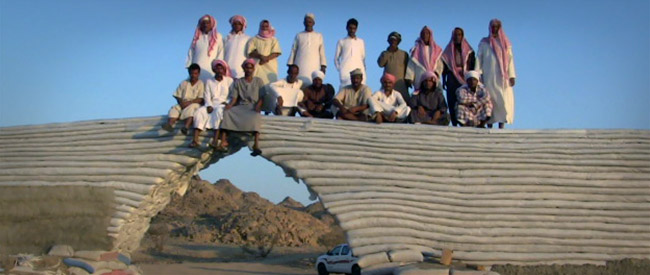World Building as the Genesis of Story: A Mind-Blowing Hour with Production Designer Alex McDowell
As the lights dimmed inside Arclight Culver City’s Theater 3 on June 8 during the penultimate night of the 2016 LA Film Festival, award-winning production designer Alex McDowell began with a brief history on how the art of storytelling evolved into today’s Virtual Reality (VR).
Tribal storytelling began as a survival mechanism to make sense of the world. As ancient peoples gathered around a fire to explore what was happening to and around them, collections of stories were gradually accumulated. With the arrival of the printing press, society was introduced to the idea of a single author directing the audience’s gaze—be the author a writer, composer, artist, designer or film director.
“We’ve become accustomed to the idea of a single author who is going to tell us where to look and where to go and frame a narrative for us,” said McDowell, best known for his immersive and groundbreaking work in films such as Minority Report (2002) and Man of Steel (2013).
The ‘60s saw the advent of independent and radical theater, where peripheral experiments with various sound and filmmaking technologies taking place outside of the mainstream eventually emerged as what’s now called VR and Augmented Reality (AR), each of which liberate the consumer’s attention from being so singularly directed. These technologically infused art forms replaced the notion of a single auteur’s “framed vision” with that of “immersion.”
“We are in this radical shift,” said McDowell. “I don’t think there is any aggregated knowledge anymore in nonlinear storytelling. I think we are fundamentally [used to] linear storytelling and we have to somehow unlearn some of that to make sense of what can be done with these new media techniques.” McDowell referred to this new era as “post-cinema”. Among the topics discussed were:

Linear vs. Nonlinear Filmmaking
In the “old world” model of filmmaking, the Production Designer is generally done on the last day of principal photography. As the film moves into post-production, the Sound Designer plays a more crucial part. McDowell recalls being astonished that, even though the “story world” as seen by audiences inherently consists of both visuals and sound, as the creator of the visual portion of that environment, he had never met the sound designer on most of his films.
Alas … World Building!
After working on Steven Spielberg’s Minority Report, McDowell developed a theory about what the new production model should look like.
“It’s much more like the theater in a way, where the creatives gather and a narrative emerges. We start with the story in the center, and then begin to process the story,” he said. To him, World Building is: “a kind of framing for how multiple narratives can spring out of one world space, and how the opportunities might [achieve] a new kind of storytelling.”
McDowell noted that one portion of filmmaking still runs counter to the nonlinear process, even to this day: the budgeting process is still tracked using Microsoft Excel spreadsheets, which “fundamentally undermines our ability to think in a nonlinear way,” he lamented. “So I challenge everyone out there to reinvent [the] budget [process].”

Case Study: Minority Report
McDowell recalls starting work on the 2002 neo-noir sci-fi thriller on the same day as the film’s writer (after the previous writer had exited the project), which meant there was no script to work off of. “The script was still a year away at that point,” said McDowell. But he still had a job to do. So with some conceptual directives from Spielberg, McDowell and his art department set out to develop a Story World within which the narrative could take place.
Even without a full-fledged script, they knew three principal elements to the story at that point:
- Location: Washington D.C.
- Time: Circa 2050
- Disruptor: PreCogs (those who can naturally “previsualize” crimes before they occur)
The question that guided their design process throughout: What if you live very high up in a skyscraper and you want to devise a way to get to work using the combination of a driverless car and an elevator? How would Tom Cruise’s character, Precrime Unit Chief John Anderton, get to work in the morning? Those questions ultimately lead to the now-iconic vertical car chase scene in the film.
Using Pre-Viz to direct the film, Spielberg’s Minority Report process was the reverse of traditional filmmaking, where the plot was written on the page before it was reproduced in physical or virtual form by set design. “It seemed clear to us that a writer sitting in a bungalow in Echo Park typing out a 120 of pages of [a script] is not going to come up with a sequence like this vertical car chase,” McDowell said.
Once the film released to high praise and box office success (grossing $358M worldwide), McDowell and his team realized that, “the design of the world had preceded the telling of the story. The script literally evolved out of the world space. The world had become a container not only for a single narrative, but for multiple narratives. We could have told 100 narratives in this world.”
Through this labor of love, McDowell also realized that his production design team needed to see the process through to the end, including visual effects.
“We saw that we needed to connect directly to visual effects. Rather than just saying we design the set, then you guys [the visual effects department] take over, we would design the entire environment, making no particular separation between the physical, the virtual, and the augmented, and then sending that out as a complete package,” remarked McDowell, who also teaches at the USC School of Cinematic Arts.

Solving real world problems: VR as a tool to extrapolate and imagine
But it’s not all just fun and games on the film set for McDowell and his expert team—they also apply the World Building technique to help solve real-world issues, such as refugee housing in Saudi Arabia and combating abject poverty in Nigeria.
“Every story ever told involves the triangulation of character, environment, and POV [point of view]. What happens if you start scripting for the possibility for a complex world where lots of characters could co-exist? How could you actually start writing a story for many humans at the center of this triangulation?”
Al Baydha is a commercial project wherein McDowell and his team was asked to envision the next ten years of a community of 3,000 tribal Bedouins in Saudi Arabia. Living in abject poverty, these nomads were building a permanent settlement for the first time in their culture— one that will be architecturally and agriculturally sustainable.
“By building this out, we were able to allow the tribe to recognize what their sweat equity was going into,” said McDowell, “but also as a separate political tool to put this in front of the local government. They’ve been trying to get land use for the last five years.”
Happily, Al Baydha’s efforts were successful. Local politicians granted land use after viewing the short film featuring their VR modeling. Showing the film to the Festival audience, one particular quote from that film seemed particularly poignant: “Poverty is social construct; it’s a design flaw. It’s something that we can undo.” Erasing world poverty by the click of a mouse—now that’s the stuff of Hollywood!
Check out daily recaps, filmmaker interviews and event highlights from this year’s LA Film Festival by watching the playlist below. For exclusive LA Muse and Programmer videos, please subscribe to Film Independent’s YouTube channel.
To read more about this year’s LA Film Festival, click here. And to learn how to become a Member of Film Independent, just click here.